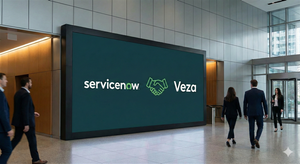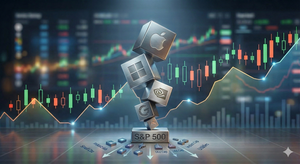
The digital battleground is shifting, and artificial intelligence (AI) is rapidly becoming the most formidable weapon in the arsenal of both defenders and attackers. As of late 2025, AI has moved beyond a theoretical concept to an indispensable tool, fundamentally reshaping how organizations protect their digital assets. This transformative era is characterized by an escalating AI arms race, where cybersecurity firms like CrowdStrike (NASDAQ: CRWD) are not just adopting AI but are striving for outright leadership, embedding intelligent systems into the very core of their defense mechanisms. Concurrently, AI-powered solutions are gaining unprecedented traction in messaging security, offering a crucial bulwark against an increasingly sophisticated wave of threats targeting email, instant messaging, and collaborative platforms. The implications for the financial markets and public companies are profound, as those who master AI will likely dictate the future of digital safety and market dominance.
AI's Ascendancy: A New Era of Digital Defense
The period leading up to September 2025 has witnessed a dramatic acceleration in the deployment of generative AI within enterprise cybersecurity. Valued at over $25 billion by the end of 2024 and projected to exceed $230 billion by 2032, the AI in cybersecurity market is experiencing explosive growth, driven by the urgent need for more intelligent and autonomous defense systems. This surge is a direct response to the escalating sophistication of cyber threats, which are increasingly powered by AI themselves.
CrowdStrike, a prominent player in cloud-delivered endpoint security, has strategically positioned itself at the vanguard of this AI revolution. Its ambition to lead in AI-driven cybersecurity is evident through its "AI-native" Falcon platform, which integrates advanced machine learning, behavioral analysis, and threat intelligence for real-time detection and automated response. A cornerstone of this strategy is Charlotte AI, a system trained on the decision patterns of CrowdStrike's expert analysts, boasting over 98% accuracy in alert triage and automating complex security workflows. Furthermore, CrowdStrike's Agentic Security Platform, launched as a core update to Falcon, provides a unified, AI-ready data layer and empowers teams to build and deploy security agents using natural language via Charlotte AI AgentWorks. The company is also addressing "shadow AI" and securing AI models themselves through its Falcon Cloud Security's AI Security Posture Management (AI-SPM) capabilities, safeguarding against new vectors like trojans and adversarial inputs.
Beyond endpoint and cloud security, AI's influence is profoundly transforming messaging security. Traditional, signature-based filters are proving inadequate against AI-generated phishing, Business Email Compromise (BEC) schemes, and deepfake attacks. AI-powered messaging security solutions now leverage Natural Language Processing (NLP), semantic analysis, and behavioral analytics to detect highly convincing, personalized threats that bypass conventional defenses. These systems are crucial in combating "quishing" (QR-code phishing) and malicious prompts designed to manipulate AI assistants like Microsoft Copilot (NASDAQ: MSFT) and Google Gemini (NASDAQ: GOOGL), ensuring that the collaboration between humans and AI agents in modern workspaces remains secure.
Market Movers: Winners and Losers in the AI Cybersecurity Boom
The rapid integration of AI into cybersecurity is creating clear winners and posing significant challenges for others in the financial markets. Companies that have embraced AI as a core component of their offerings are poised for substantial growth, while those lagging risk obsolescence.
CrowdStrike (NASDAQ: CRWD) stands out as a primary beneficiary. With its Falcon platform deeply embedded with AI, the company is not merely adding AI features but building an AI-native security ecosystem. Its strong market share in endpoint protection (20.65% in 2025) and impressive 95% growth in its AI Security Information and Event Management (SIEM) business in 2025 underscore its successful execution. CrowdStrike's ambitious target of $20 billion in annual recurring revenue (ARR) by fiscal year 2036 is heavily reliant on its AI advancements and strategic partnerships with tech giants like Nvidia (NASDAQ: NVDA) and Salesforce (NYSE: CRM), aimed at securing AI development pipelines. Other cybersecurity leaders such as Palo Alto Networks (NASDAQ: PANW) and Zscaler (NASDAQ: ZS) are also heavily investing in AI, integrating machine learning into their cloud-native security platforms to enhance threat detection, automate policy enforcement, and provide advanced analytics. Microsoft (NASDAQ: MSFT) with its Defender suite and extensive cloud security offerings, bolstered by its own AI capabilities and Copilot integrations, is another significant player benefiting from this trend. These companies are well-positioned to capture market share by offering comprehensive, AI-driven security solutions.
Conversely, companies relying on legacy, signature-based, or purely rule-driven security models face an uphill battle. Smaller, less agile security firms that lack the R&D budget or technical expertise to integrate sophisticated AI may find their products increasingly ineffective against evolving, AI-powered threats. Even larger established players that are slow to pivot could see their market positions eroded. The cost of developing and maintaining cutting-edge AI capabilities is substantial, creating a barrier to entry and consolidation within the industry. Companies that fail to adapt their product roadmaps to include advanced AI for proactive threat intelligence, automated response, and deep behavioral analysis will likely struggle to retain customers and attract new ones in this rapidly evolving landscape.
The Broader Implications: A Paradigm Shift in Digital Trust
The growing role of AI in cybersecurity extends far beyond individual company performance, signaling a profound paradigm shift in how digital trust is established and maintained. This event fits squarely into the broader industry trend of increasing automation and intelligence in security operations, driven by the sheer volume and complexity of cyber threats that human analysts alone cannot manage. The talent shortage in cybersecurity further amplifies the need for AI to augment human capabilities, allowing security teams to focus on strategic initiatives rather than manual triage.
The ripple effects are significant. Competitors are compelled to accelerate their own AI integration, fostering an innovation race that ultimately benefits end-users with more robust security. Partners, particularly those in cloud computing and AI development, are finding new avenues for collaboration, integrating security directly into the AI lifecycle. Regulatory bodies are also grappling with the implications of AI in security, considering how to balance innovation with oversight. Concerns around AI bias, data privacy in AI training, and the ethical use of AI in defensive (and offensive) cyber operations are likely to spur new policies and compliance requirements. Historically, major technological shifts—from firewalls to antivirus to cloud security—are poised to be the most impactful of these transformations, akin to the internet's initial impact on information sharing.
Moreover, the weaponization of AI by malicious actors introduces a new dimension to cyber warfare. AI-powered attacks, capable of generating hyper-realistic phishing campaigns, sophisticated malware variants, and automated reconnaissance, necessitate an equally advanced AI defense. This creates a perpetual arms race, where the effectiveness of defensive AI must continuously evolve to counter offensive AI. The concept of "shadow AI"—unauthorized AI tool usage by employees—also presents novel internal security challenges, demanding new AI-SPM solutions to monitor and secure these emerging vectors.
What Comes Next: Navigating the Intelligent Frontier
Looking ahead, the trajectory of AI in cybersecurity points towards an increasingly autonomous and proactive defense posture. In the short term, we can expect continued rapid innovation in AI-driven threat detection, with a focus on real-time anomaly identification across diverse data sources. Companies will further refine generative AI capabilities for automated incident response, predictive analytics, and threat intelligence, moving closer to self-healing security systems. The integration of AI into identity and access management (IAM) will become more seamless, enabling continuous adaptive authentication based on behavioral patterns.
Longer-term, the industry is likely to see the emergence of fully "agentic security" platforms, where intelligent agents autonomously identify, contain, and remediate threats with minimal human intervention. This will require significant advancements in AI explainability and trust, as security teams need to understand and validate autonomous decisions. Strategic pivots will include a greater emphasis on securing the AI supply chain itself, protecting AI models from adversarial attacks, and developing robust defenses against deepfake and sophisticated social engineering tactics. Market opportunities will arise in specialized AI security services, AI auditing, and solutions designed to secure multi-agent AI environments. Challenges will include managing the complexity of AI systems, addressing the ethical implications of autonomous security, and ensuring interoperability across diverse AI-powered tools. Potential scenarios range from a highly secure, AI-augmented digital world to a more volatile landscape where AI-powered attacks and defenses are in a constant, high-stakes standoff.
Wrap-Up: Investing in an Intelligent Defense
The growing role of AI in cybersecurity is not merely a trend; it is the defining characteristic of modern digital defense. Key takeaways include the indispensable nature of AI for combating increasingly sophisticated threats, CrowdStrike's aggressive pursuit of AI leadership through its Falcon platform and Charlotte AI, and the critical importance of AI in securing messaging and collaboration platforms. The market is clearly moving towards AI-native solutions, favoring companies that can effectively integrate and innovate with intelligent systems.
Moving forward, investors should closely watch companies with demonstrable AI capabilities, significant R&D investments in AI, and strategic partnerships that enhance their AI ecosystem. Metrics such as AI-driven revenue growth, customer adoption of AI-powered features, and success in combating novel AI-generated threats will be crucial indicators of future performance. The cybersecurity landscape will continue to be a dynamic and high-growth sector, with AI serving as the primary catalyst for innovation and competitive differentiation. Companies that fail to embrace this intelligent frontier risk being left behind in the ever-evolving battle for digital security.
This content is intended for informational purposes only and is not financial advice





